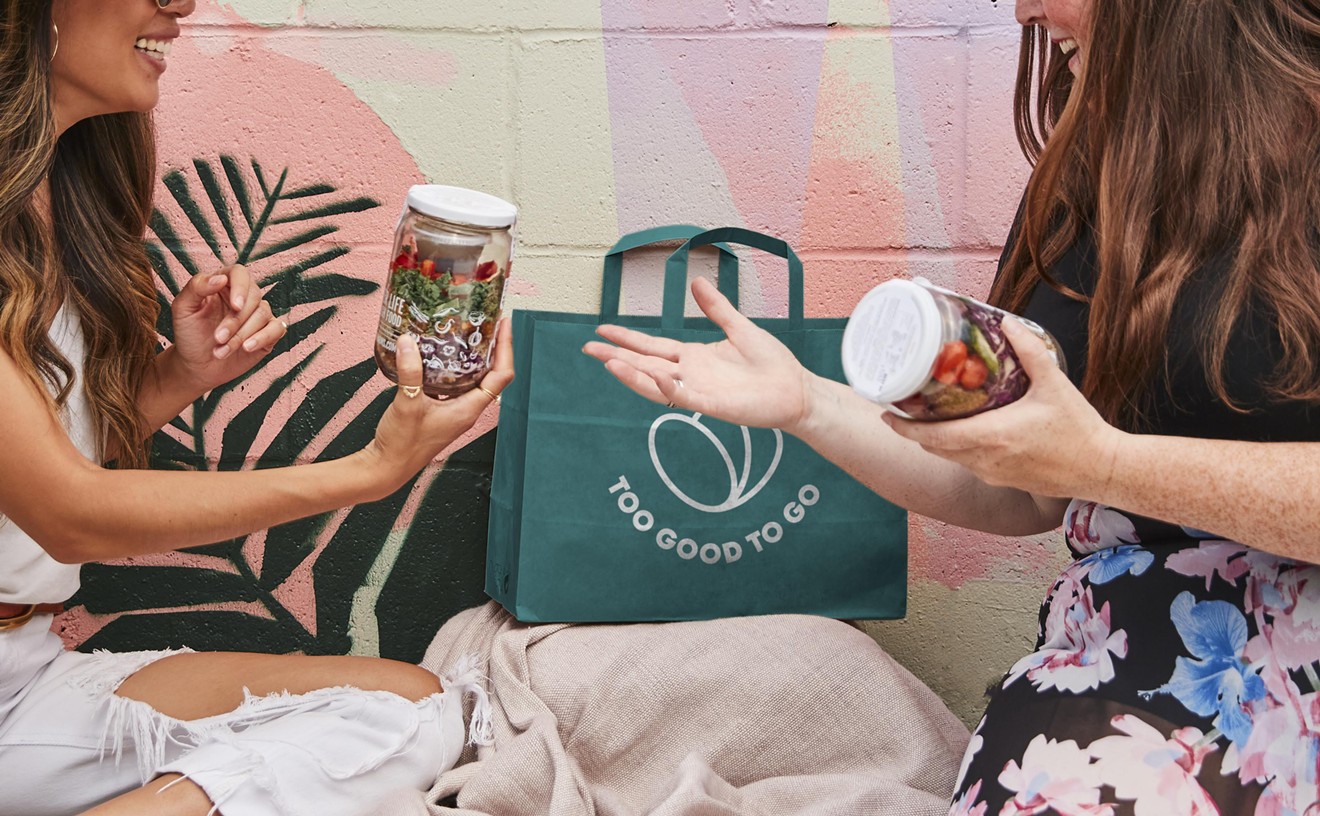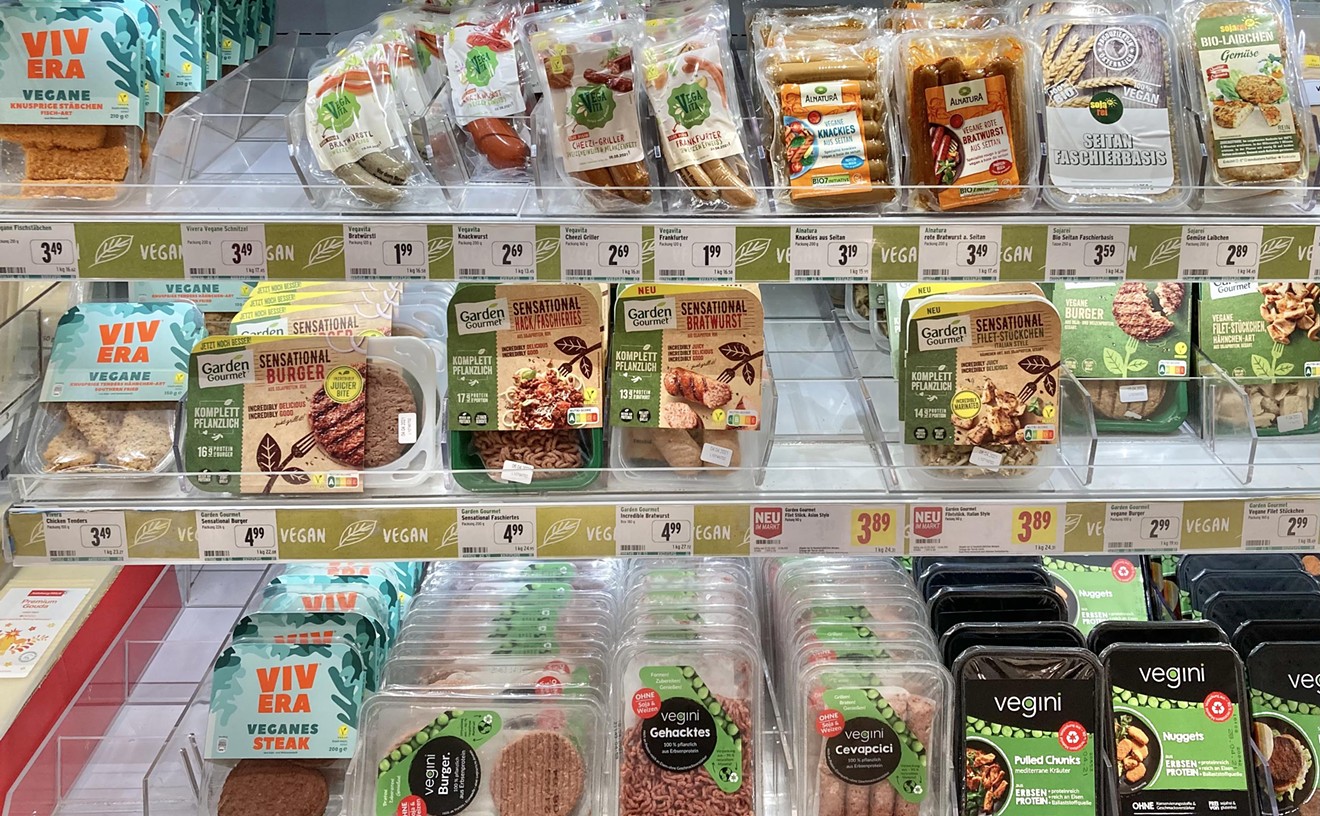The Tender: Jeff Norman
The Bar: Jack Daniel Distillery, makers of Jack Daniel's Old No. 7 Tennessee Whiskey and other liquors, Lynchburg, Tennessee
The Pedigree: Norman isn't actually a bartender at all, though he does work extensively with liquor -- whiskey, to be specific, and Jack Daniel's, to be precise. He was born and raised in Lynchburg, Tenn., home to the Jack Daniel's distillery, where his parents both worked. After picking up a Ph.D. in environmental chemistry in 2003, Norman returned to his roots and began work at Jack Daniel's as a still man, moving quickly up the ranks to become master taster three years ago. His visit with us corresponds with the release of Jack Daniel's Tennessee Honey, the first new product from the distillery in a generation.
Not a question, but your job sounds pretty rad.
It sounds like a fun job -- and it is a fun job -- but it's also very important. People pour a drink of Jack Daniel's and they expect a certain flavor and aroma. It's very distinctive. As a taster, that's what I'm looking for, to make sure that those signature notes -- the soft oak, the caramel and vanilla -- are there.
What's the proper tasting temperature for a whiskey?
Room temperature. The colder you get a whiskey, the more you numb out the flavors in there, so room temperature is really the best way to get the most flavors and aromas out of there.
I imagine there's a lot of blending of barrels going on, temperature swings, etc. How difficult is it to get that same flavor every time?
It's really not that difficult. Over the years, we've perfected the way we craft the whiskey. We craft the whiskey exactly like Jack did -- we still follow his exact recipe. Granted, we're making more of it, but the same basic premise is the same. In the end, we have all these barrels, so to ensure that consistency, we take hundreds of barrels that are mature enough to be bottled and blend everything together to make sure everything is consistent.
How does Jack pick up its signature flavor?
All of our whiskey starts off clear. The whiskey's made the same. The barrels are made the same, too. They're American white oak, and we toast and char the wood in the same way you toast a piece of bread or a marshmallow over a campfire. In those instances, the flavors and aromas in the food are unleashed when you toast them, and the wood's the same way. Going into the barrel, the whiskey looks clear, like water. Coming out, it looks brown. All our color, flavor and aroma comes from the wood. We're not adding anything to enhance any of those characteristics. The seasons vary in Tennessee. We have hot summers; we have cold winters. In the summer, the whiskey will expand and push deeper into the wood. When it gets cold, the liquid will contract and come out of the wood, which helps it pull flavor, color and aroma. A the seasons pass, it's going to do it over and over again.
What's a typical day like for you?
From when I first come in, I'm tasting whiskey. I'll have a cup of coffee, then I wait. The samples come in mid-morning, but I'll have to wait until I have them because the coffee could mask anything wrong with the whiskey. Same with a heavy meal. So I have to be careful about what I eat. Keep in mind that I'm tasting every day that I'm there. It keeps my baseline very flat; it keeps me in practice. I'll have about 40 samples in the course of a day. Most of it's single barrel, because we have to treat each barrel individually and I'm tasting each one. For the Gentleman Jack, No. 7 and the Honey, I'm tasting batches that are ready to be bottled.
Is it just you?
There's a panel of us who pick the single barrels. There are seven of us, like the number on the label.
Was the choice to have seven tasters due to the number on the label? Are there other instances of the number seven at the distillery?
I think the choice to have seven tasters may have been because of the label. Oddly enough, right now we have 77 warehouses we store the whiskey in as well. Other than that, there aren't any other weird things, though. The number seven is shrouded in mystery. Some people think it was Jack's seventh recipe; some think he was sending it my train to a customer and at the train station it was randomly marked with a seven, and the customer wrote back, "Please send more of the number seven."
I imagine you've gotten to drink with some interesting people as part of your job. Want to drop some names?
Jamey Johnson, the country music singer; David Legwand, a Nashville Predators hockey player; Michael Ross, Tennessee Titan.
There are certain regulations distillers have to follow for their product to be called bourbon. Are there similar regulations for Tennessee Whiskey?
We follow the definition of a bourbon. To be a bourbon, you have to be at least 51 percent corn, which we are. We're 80 percent. You can't distill at over 140 proof. We can't go into the barrel at less than 125 proof, and we go in at 125. We follow all the intricacies bourbon does. The extra step -- charcoal mellowing -- makes us a Tennessee Whiskey. Something different.
What's charcoal mellowing?
We make charcoal on site from sugar maple wood. We burn the wood and grind the charcoal up in these mellowing vats that are six feet wide and ten feet deep. Think about a charcoal filtration unit that you'd put on your tap water at home. That charcoal removes things you don't want in there -- impurities. But we're not filtering anything. The pre-mellowed whiskey is just as clear as the filtered whiskey. We aren't physically filtering things out, which is a physical process. We're chemically removing things. It removes things that are responsible for the burn and some of the oily, grainy notes you might find in a whiskey. We think that mellowing gives us a blank slate. We're ready to accept color and flavor and aroma. We mellow to get the whiskey neutral, with suppressed flavor and aroma, because we want the character to come from the barrel.
How long does the process take?
About three to four days. We pack the charcoal down in the vats, because we don't want the whiskey to channel through quickly. We'll put about a foot and a half on charcoal in there, and then somebody will actually get in the vat and they'll mash it down by foot. He gets out, we add another foot and a half, and hell tamp it down some more.
If you're starting out with the same base whiskey, how is it that Single Barrel has a higher proof than the other labels?
Going into the barrel, we go in at 125 proof. Whiskey on the first floor -- since the barrels there are cooler -- stays at about 125. Whiskey on the upper floors, since it sees a lot of heat, will actually lose water vapor and some ethanol, because wood is porous. So the alcohol actually concentrates as you go up in the warehouse. The whiskey coming out of the higher barrels will be around 135, 140 proof. Every distillery around the world will add water to reduce to bottling proof, and we do the same thing. We'll test the proof of each batch and add x amount of water to it to bring it down to bottling proof.
Do you ever try the stuff before the water gets added to it?
Yep. Every so often we'll take media up there to the very top to try the single barrel. Don't get me wrong -- it's stout. But it's surprisingly smooth.
How many barrels are in the warehouses? And how large are they?
Collectively, about 1.8 million barrels. Some are five floors, some are seven.
So how about the honey?
We got to thinking: how can we appeal to our soon-to-be friends out there who may not like whiskey? Whiskey isn't for everybody. We thought we needed to make some type of liqueur, something that plays off the natural caramel and vanilla notes in Old No. 7. So what can we pair with that to make a very sweet, very palatable liqueur? Honey. We make liqueur with real honey and add some praline flavoring, some molasses, some butterscotch, then mix that with Old No. 7, our base whiskey, to make a 70-proof liqueur. It's good on the rocks, it's good over ice cream, it's good on bread pudding. It's so versatile. [Editor's note: there's even a recipe for steak marinade!]
What's been the most memorable experience you've had as master taster?
I was at a NASCAR race and I was talking to the crowd and handing out some T shirts. I asked questions about Jack Daniel's, and anytime people got them right I'd throw them a shirt. I had one left and this guy comes up to me and says, "I need that shirt." I said, "Well, you didn't answer any questions! Why do you need it?" He goes, "Because of this," and peel his bottom lip down where he had Jack Daniel's tattooed on the inside of his bottom lip. People who are that passionate about the whiskey, that they call Jack their whiskey, I think that's pretty cool.
On average, how much time does it take for the whiskey to go from the barrel to the bottle?
On average, Gentleman Jack takes roughly 4.5 years. Same for the black label. Single Barrel takes about 6.5 years to mature. Most scotch makers use their barrels to hold their whiskey for a set period of years. They hang their hats on age; we hang ours on maturity. I'll say to you: I know you know two people who are the same age, but differ in maturity. That can be said of whiskey. Age is not a good indicator of character; maturity is. We don't have an age statement on the bottles. We don't have a calendar. We treat the whiskey like you would the fruit on a tree. It's ripe when it's ripe.
You can only age your whiskey in new, unused barrels. What happens to all the barrels after you're done with them?
The bulk of our barrels are sold to the scotch industry, which is why we like to thank people who like scotch -- they're Jack Daniel's fans and they don't even know it.
We share some of the characteristics of a bourbon, but once we mellow, that makes us a Tennessee whiskey.
Other than Jack, what's your drink?
I don't drink any liquor other than Jack. I was out here in Phoenix a few years ago and did a tasting at the Phoenician. We go out afterwards and one of the guys I'm with says, "Let me get you a drink. What do you want?" I say, "I'll take Old No. 7 on the rocks." He says, "It's okay, you can get whatever you want." I say, "I'll take Old No. 7 on the rocks!" He thought I did this as my job and then drank other stuff when I was off-duty. This is what I drink; it's what I like.
How many rocks are appropriate in a glass of neat whiskey?
Three average-sized rocks are all you need.
Check back later today for a recipe from Norman.
Follow Chow Bella on Facebook and Twitter.
Merr









